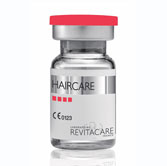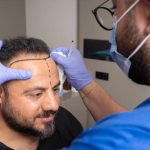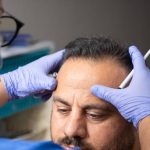March 31, 2023 By simonw Comments are Off

Table of Contents
HAIR RESTORATATION TORONTO: SCALP MICRPIGMENTATION VS HAIR TRANSPLANT
Introduction to Scalp Micropigmentation & hair transplant
Hair loss can affect men and women of any age. Androgenetic alopecia is the most prevalent type. The hairline is clearly and gradually receding in men. For women, there is a gradual thinning of the entire scalp. Many options for alopecia are available, from PRP to laser therapy and hair transplants. One procedure that has gained popularity in just the past 20 years is scalp micropigmentation. Non-invasive tattoos that emulate hair growth without actually growing hair.
The Causes of Hair Loss
There are many causes of alopecia, from DHT, hormone imbalance, ageing, genes, medications, stress, and illnesses. Only preventative maintenance can help reduce hair loss; no known cure exists. With the onset of hair loss, men and women should begin a program which includes therapies such as PRP (platelet-rich plasma), finasteride (Propecia), and minoxidil (Rogaine) as soon as possible. If these treatments don’t work, the next options are scalp micropigmentation and hair transplant.


What is SMP Scalp Micropigmentation?
Scalp micropigmentation is a form of permanent makeup using a tattoo device and ultra-fine needles. Tiny pigments of ink are deposited into the scalp, with each dot replicating a hair follicle. Hundreds or thousands of these dots can give the illusion of a full head of hair with a clean-shaven look. This process was developed in the early 2000s by Ian Watson of His Hair Clinic UK and, since then, has expanded globally. Today SMP is a standard hair loss procedure that is safe for everyone and effective if done by experienced and skilled SMP artists.
How Does Scalp Micropigmentation Work?
The scalp micropigmentation procedure usually entails multiple sessions, often three to four, over a few weeks. During the first session, the SMP artist will collaborate with the patient to create a natural-looking hairline and choose a pigmented shade that should match their hair and skin colour. In the subsequent sessions, the artist will utilize a handheld microneedle to place the pigment into the scalp, producing the appearance of hair follicles.
Is Scalp Micropigmentation Safe?
When a qualified and certified SMP artist uses sterile tools and premium pigments, scalp micropigmentation is a safe and efficient process. Hair restoration using SMP is a low-risk choice because the technique is safe, non-invasive, and doesn’t involve surgery. However, infection, scars, and allergic reactions are some risks that might arise from cosmetic procedures.
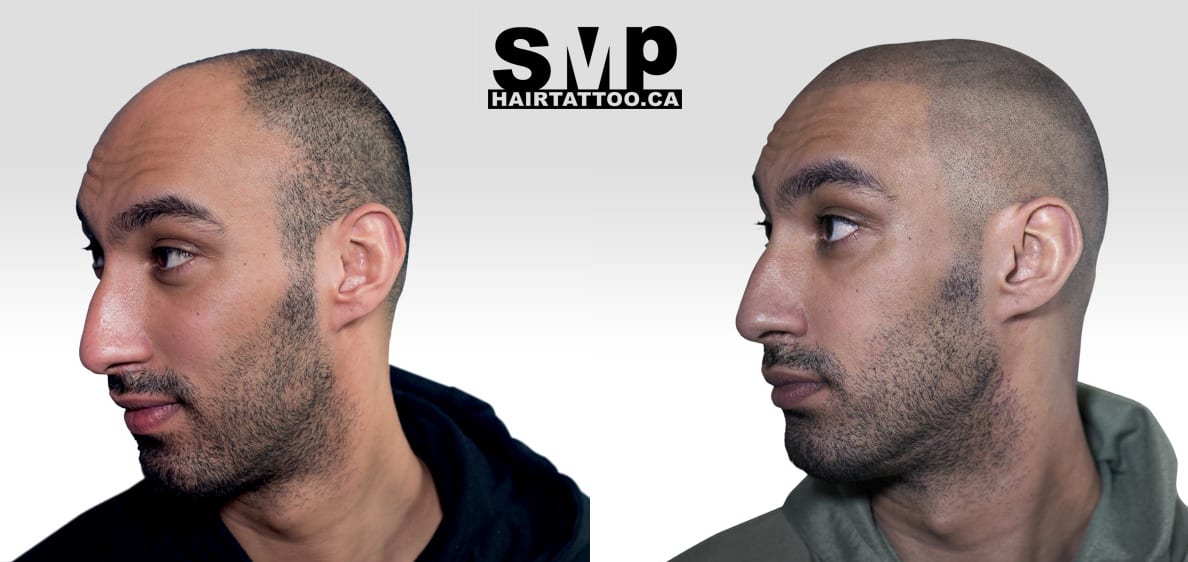

What Are the Benefits of Scalp Micropigmentation?
BENEFITS OF SMP
- Results in a natural-looking appearance of hair follicles
- It does not require any recovery time or downtime
- It can create the illusion of a fuller head of hair
- It can be customized to match natural hair colour and style
- Is a cost-effective alternative to hair transplant surgery
- Provides a long-lasting solution to hair loss
- It can be used to conceal scars from previous hair transplant surgeries
- It is suitable for both men and women
- Can improve self-confidence and self-esteem
- Provides a non-invasive solution to hair loss
DISADVANTAGES OF SMP
- Require multiple sessions to achieve desired results
- Results may fade over time and require touch-ups
- May cause some discomfort during the procedure
- May not be suitable for individuals with certain skin conditions
- Requires shaving the head, which may not be desirable for some individuals
- Can be expensive compared to other hair loss treatments
- Results may not look as natural as hair transplant surgery
- Not a permanent solution and may need to be repeated every few years

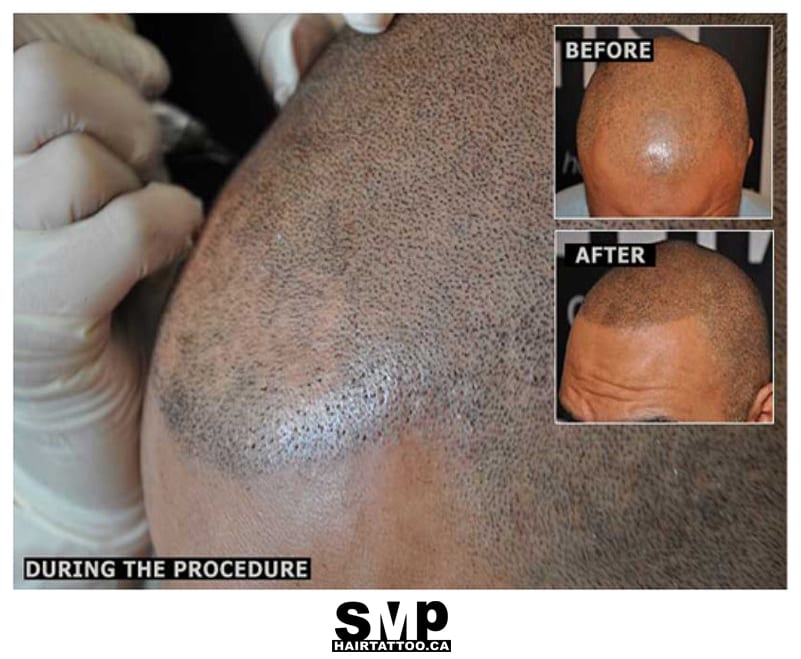
Hair Transplants: A Surgical Approach to Hair Restoration
With a hair transplant, hair on the back and sides of the head (donor’s hair) are harvested and transplanted to the thinning areas in the front of the scalp. The duration of a transplant will depend on how extensive it is, and it is usually performed under local anesthesia.
How Hair Transplants Work
A surgeon performs a hair transplant operation by taking healthy hair follicles from the scalp’s donor area on the back and sides and transplanting them to the places where hair is thinning or balding. Hair will grow naturally in the new site where the transplanted hair follicles have been placed. Follicular unit transplantation (FUT) and follicular unit extraction (FUE) are the two main methods of hair transplant surgery.
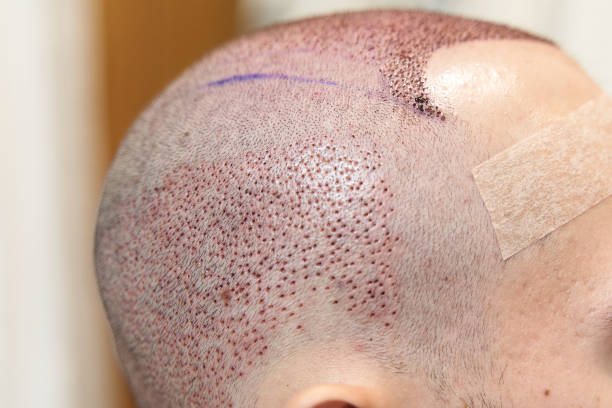
Hair Transplant Using FUE method
Follicular Unit Transplantation (FUT)
An example of hair transplant surgery is FUT (follicular unit transplantation), which involves removing a strip of skin from the donor area containing hair. This strip is then dissected into individual follicular units. Next, the surgeon makes tiny incisions in the recipient area, and the follicular units, usually containing 1-4 hairs each, are transplanted into these incisions. Although FUT is known for its favourable results, it also leaves behind a visible linear scar in the donor area, which can be concealed by longer hair or scalp micropigmentation.
Follicular Unit Extraction (FUE)
Follicular unit extraction (FUE) takes a different approach to hair transplantation by directly extracting individual hair follicles from the donor area with the help of a punch tool. Once removed, the surgeon implants the individual follicles into small incisions in the recipient area. Although FUE is more labour-intensive and time-consuming than FUT, it offers some advantages. Unlike FUT, FUE does not leave a linear scar in the donor area. Instead, it leaves tiny circular scars that are hardly noticeable, even with shorter hair. They become apparent only if the hair is cut short or shaved, in which case SMP can camouflage the tiny scars.
Hair Transplant Recovery and Results
The transplanted hair frequently begins to come out a few weeks after a hair transplant treatment. Patients need not worry because new hair growth will come from the implanted follicles over time. It would help avoid heavy lifting and strenuous exercise after the surgery to recover better.
In general, hair transplantation is a fantastic remedy for hair loss. Overall, hair transplantation is a great way to treat hair loss. Yet a number of variables, including as the patient’s donor hair supply and the surgeon’s expertise and experience, will affect how well the procedure goes.
What are the benefits of Hair Transplant?
BENEFITS OF HAIR TRANSPLANT:
- Provides permanent and natural-looking results
- Hair transplant can restore hair growth in bald or thinning areas
- Minimal maintenance is required for the transplanted hair
- Can increase self-esteem and confidence
- The transplanted hair can be styled and treated like natural hair
- No need for regular touch-ups or ongoing treatments
- The transplanted hair is resistant to baldness and thinning
- The procedure is safe and effective when performed by a qualified surgeon
- The transplanted hair can improve the overall appearance of the face
- Hair transplant can be a one-time solution for hair loss.
DISADVANTAGES OF HAIR TRANSPLANT
- Surgical and invasive.
- Requires anesthesia.
- Can take several hours or even days to complete.
- Requires a longer recovery time.
- Requires donor hair from another area of the scalp.
- Patchy results if not enough donor hair.
- Results may take several months to become noticeable.
- Limited hairline and style options.
- May require multiple sessions for optimal results.
- Expensive procedure, more than SMP
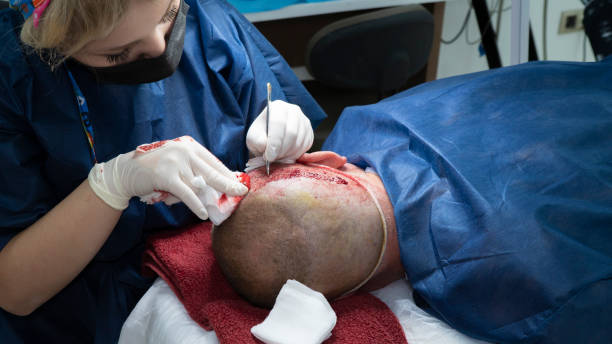
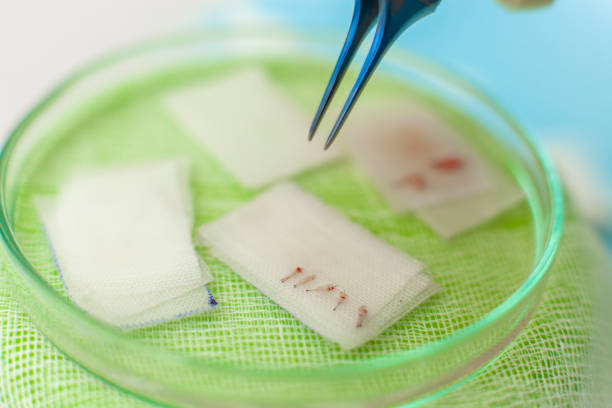
Scalp Micropigmentation vs. Hair Transplants
Two hair restoration procedures that have gained popularity in the last 20 years are scalp micropigmentation and hair transplantation. Both scalp micropigmentation and hair transplants have their pros and cons.
SMP is less expensive than hair transplant surgery, has no downtime, and is a reasonably quick and straightforward treatment.
Contrarily, hair transplants offer a more realistic alternative to hair loss with long-lasting effects. Therefore, speaking with a knowledgeable practitioner is essential to establish which choice is best for you. In rare circumstances, a mix of scalp micropigmentation and hair transplants may be suggested for the best outcomes.
Comparison between scalp micropigmentation, hair transplant, and hair system:
Scalp Micropigmentation | Hair Transplant | Hair System | |
|---|---|---|---|
| Definition |
|
|
|
| Procedure |
|
|
|
| Recovery Time |
|
|
|
| Results |
|
|
|
| Cost |
|
|
|
| Suitable for |
|
|
|
| Longevity |
|
|
|
| Risks |
|
|
|
| Maintenance |
|
|
|
TAKEAWAY
A hair transplant or scalp micropigmentation is usually used for hair restoration. Those who want to hide their bald scalp can choose SMP because it’s less expensive and non-invasive; those needing surgery and having enough donor hair can opt for hair transplants. To determine which stage is suitable for your particular needs and objectives, it would be beneficial if you spoke with a knowledgeable hair restoration specialist.
While contemplating hair transplantation as a hair restoration procedure, there are numerous aspects to take into account. The quantity of donor hair that is readily available is one of the most important factors. There might not be enough donor hair available for a patient with severe androgenic alopecia to accomplish a successful hair transplant.
For those dealing with balding or thinning hair, scalp micropigmentation is a cutting-edge scalp restoration method that can offer a natural-looking solution.
Scalp micropigmentation is an affordable, non-invasive, and safe process that may be tailored to each patient’s specific requirements. However, choosing a qualified and experienced scalp micropigmentation provider is essential to ensure the best results. In addition, SMP does not grow hair but can only give the illusion of thicker hair, so it isn’t for people who want natural hair.
While hair transplantation can be an effective hair restoration solution, it’s unsuitable for everyone. Those with advanced hair loss or limited donor hair may benefit more from scalp micropigmentation. It’s essential to consult with a hair restoration specialist to determine the best treatment for your specific needs and goals.
Whether you choose scalp micropigmentation, hair transplants, or another hair restoration solution, addressing your hair loss is essential. In addition, Alopecia can significantly impact one’s self-esteem and confidence. By exploring your options for hair restoration, you can take control of your appearance and feel more confident in your skin.
ABOUT OUR CLINIC
At our Trichology and scalp micropigmentation clinic, we prioritize the needs and requests of our clients. Our practitioners use specialized needles to create detailed hair tattoos, also known as scalp tattoos, to give the appearance of thicker hair.
Our team of SMP practitioners pays close attention to detail, ensuring that each client leaves with a perfect hairline and the appearance of a full head of hair with tiny hair follicles. We also offer services for those with bald spots, hair transplant scars, or unsuitable candidates for a surgical procedure.
During the SMP treatment, thin needles are used to implant pigment into the epidermal layer of the skin, which is a minimally invasive way to address hair thinning. The size and depth of each tattoo are carefully considered to ensure a natural-looking result. With Scalp micro-pigmentation, clients can leave our clinic with a new style and renewed confidence. Please book a consultation today to start your SMP journey.

Book Your Free Consultation Today Or Call (647) 492-9093
Comments are closed.









